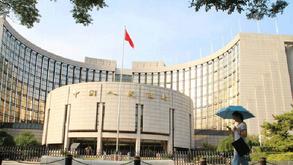 The headquarters of the People's Bank of China in Beijing. (SHI YAN / CHINA DAILY)
The headquarters of the People's Bank of China in Beijing. (SHI YAN / CHINA DAILY)
BEIJING - China's central bank on Thursday pledged to make monetary policy more flexible and targeted to achieve a long-term balance between stabilizing growth and preventing risks.
Greater focus will be placed on supporting the recovery of the real economy and sustainable development, the People's Bank of China (PBOC) said
Greater focus will be placed on supporting the recovery of the real economy and sustainable development, the People's Bank of China (PBOC) said in its second-quarter monetary policy report, vowing to apply and innovate multiple policy tools to maintain reasonable and sufficient liquidity.
The PBOC stressed efforts to enable structural policy tools to play a more effective role in supporting the real economy, especially medium-sized, small and micro businesses, to tide them over difficulties.
The central bank will also push the reform of loan prime rates and advance the orderly shift to the new loan-pricing benchmark to drive a notable drop in overall financing costs.
ALSO READ: Stocks rally as PBOC policy gets deferral
It reiterated that the property sector will not be used as a means of short-term stimulus, and vowed to maintain the continuity, consistency and stability of property financing policies.
While the fundamentals for China's stable and sound high-quality development remain unchanged in the long term, the world economic downturn has brought instabilities and uncertainties, the report noted, adding that domestic structural, institutional and cyclical problems still exist.
READ MORE: PBOC signals slower pace of policy easing
On the back of timely policy moves and coordination, China's economy has so far delivered better-than-expected performance amid its fight against COVID-19.
Official data shows China's gross domestic product expanded by 3.2 percent year on year in the second quarter, following a 6.8-percent contraction in the first three months.


